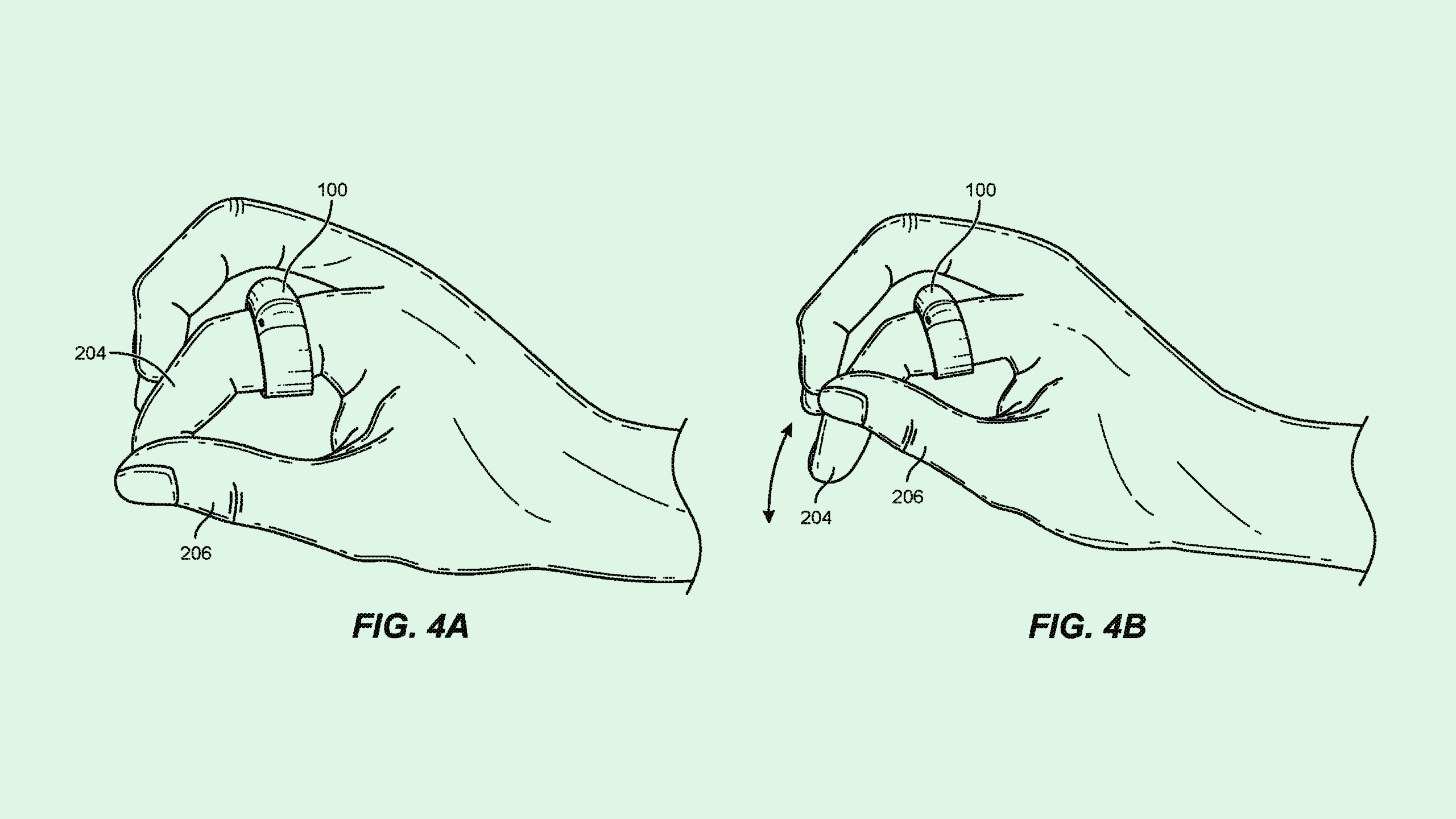Meta’s Costly Reality Labs Bet May be a ‘Test Bed’ for AR Glasses
Peripheral devices add another layer of friction onto the experience that stands to turn off users.

Sign up to uncover the latest in emerging technology.
Meta wants to put a ring on it.
The company filed a patent application for an “optical ring that enables thumb-to-index gestures.” Meta’s patent details a wearable used for controlling and interacting with mixed reality environments without having to make “large and apparent hand motions.”
“This can be distracting and tiring for the wearer,” Meta said in the filing. “Moreover, existing XR input devices often require wearer-specific training data for underlying inference models to work effectively.”
Meta’s ring is equipped with a miniature optical sensor to monitor nuanced, complex gestures made by the thumb and index finger. The camera captures “ultra low-resolution” images of a user’s fingers for minimal data processing (and therefore smaller form factor) while still allowing it to interpret gestures.
Additionally, the ring would include electrodes to capture “bioimpedance measurements,” or changes in electrical currents throughout the hand, as well as a motion-tracking sensor to understand gestures in more detail. Taken together, the ring is able to capture what Meta calls “stateful” gestures, or layered inputs that give its system a better understanding of both motion and pressure.
This could make things like menu selection or navigation more seamless in extended reality environments. It may also let Meta use “user-generalizable ML models,” foregoing the need to collect extra data from users.
We’ve seen peripheral devices like this from Meta before. The company has filed several patents for smart watch tech, and its recently-debuted Project Orion AR glasses include a neural wristband for input tracking.
While these devices are helpful for taking the burden of processing off of extended reality headsets, they add another layer of friction onto the experience that might turn off users, said DJ Smith, co-founder and chief creative officer at The Glimpse Group.
“Any peripheral device at its core is a hindrance to adoption,” he said. “The overall experience may be better because the user input is smoother and quicker, but having to deal with clunky stuff is never good.”
This is where Meta may want to take notes from Apple, said Smith. While the company’s device ecosystem is filled with peripherals, each comes with its own functionality that adds value. “If it’s not adding value, it’s going to be a chore,” said Smith.
And though Apple is fairly new to the extended reality market, the company may be pushing into Meta’s turf: The iPhone maker’s hardware division is planning to push into the smart glasses market, according to Bloomberg, starting with an internal study to gather feedback from employees for an initiative codenamed Atlas.
Lots of things stand in the way of making glasses a viable form factor, Smith noted, both in terms of engineering and cost. But for Meta and Apple, “the long-range vision has always been a pair of glasses,” he said. Both the Vision Pro and Reality Labs, while incredibly costly endeavors, are likely a “test bed for AR glasses down the road.”
Recouping those investments is going to be a matter of adoption, he said. “Getting the cost down, getting more people into it, creating more use cases — all of these things will happen over time.”











